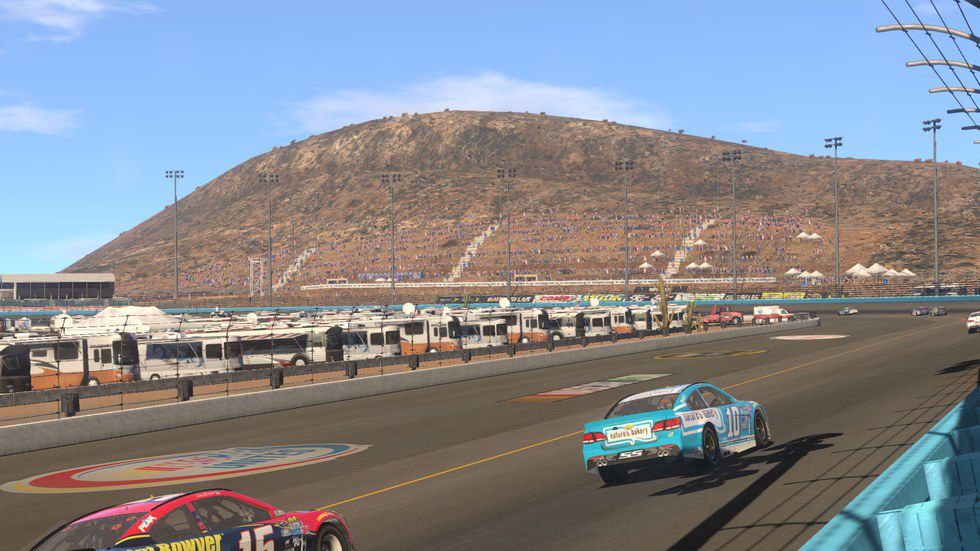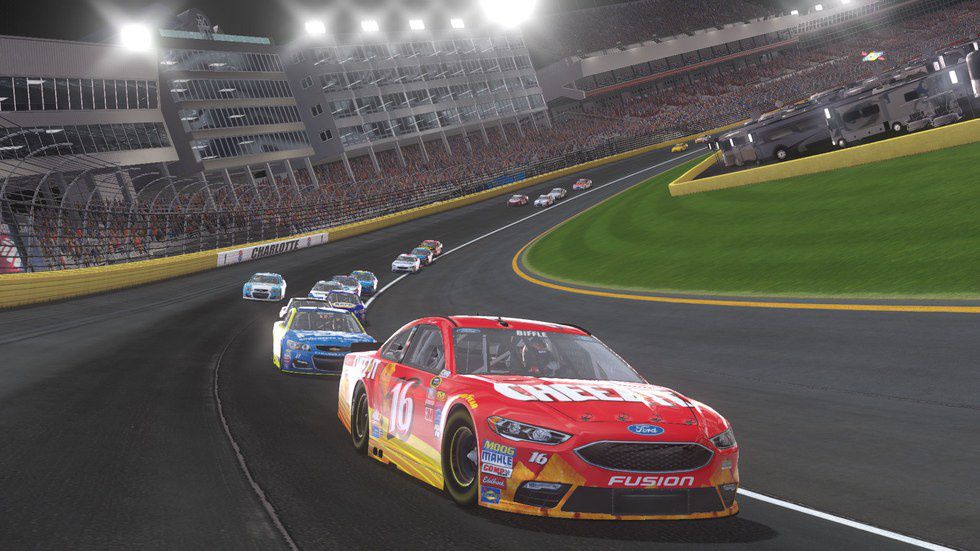September saw an assortment of new distractions in my life, even beginning in another state. The past few weeks, I have taken to analyzing every corner of the new "NASCAR Heat: Evolution" video game on the PlayStation 4. The game is also available on Xbox One and PC, and the console experience looked to be the choice for me. It had been since 2006 that I had purchased a NASCAR game on a console.
Popping in the disc on day one, one thing surprised me right away. The inevitable day one patch, but this was not the shocking bit. The patch was over one GB in size, strange for a game that hasn’t been in circulation yet. Minor patches are usually put in place day one to fix connection issues, and glitches that weren’t found in the system until ran through the public. After a few minutes, the game loaded up and I began to discover the first of a new breed.
"NASCAR Heat: Evolution" is the first NASCAR licensed video game on the current generation of consoles. The game features all 23 NASCAR circuit tracks, 40 official drivers, and comes stock with Daytona race paint schemes (the ones from February).
The main menu features only a few options, and I proceed to race in the “quick race” style option. I pick a driver and proceed to choose a track. Right off the start, I notice a shortcoming. The tracks are locked, except for a select few. This is a disappointment, as I now have to pick something other than Bristol.
Jumping into the race, I cannot change any options. Later, I discover that the race length options are hidden inside of the career mode. I’m not sure how this makes logical sense. These shortcomings leave me a little off, but I proceed to let the racing sway my opinion.
"NASCAR Heat: Evolution" has wonderful racing, adaptable to all skill sets and racers.
The racing is extremely enjoyable. AI cars adapt to your position, and don’t run you off the race track in the corners. Their speeds fluctuate based on your ability to drive at a certain track, calculating a speed rating. They have off-days in seasons, and even wreck on their own. Driving your car feels fluid, and realistic. For the casual racer, it feels manageable. Drafting doesn’t make your car incredibly difficult to control, and using the standard dual shock controller does not limit my ability to succeed.
This is where the game excels. The graphics look decent, but not outstanding. The multiplayer mode is hit or miss with a lack of structure enforcement. In Gran Turismo, cars can be penalized for purposely acting irresponsible and jeopardizing the races. This is not the case in "NASCAR Heat", and some drivers like to ruin your good time. The game features fun challenges, such as in previous games, where players compete in small events with different objectives. You might have 5 laps to win a race from the back, or hold off oncoming cars on worn tires for the win. These are nice for the racers who want something different to do, or who are particularly skilled and up to a challenge.
Comparing "NASCAR Heat: Evolution" to previous games is definitely important. Dusenberry Martin Racing is calling the game a relaunch of a franchise. After a disappointing last few games, the NASCAR community hopes this to be true. To compare to previous games, we must compare features and overall gameplay.
Starting with menus and options, "NASCAR Heat: Evolution" seems to fall short. The game's menu screens and options so a lack of depth, and a lack of features. This tends to translate to content in other games, however the replay value from the enjoyment of unexpected racing makes up for this to an extent. This game does not offer a lot of different racing modes. There is a quick race type mode, where a player can set up and do one race at one track. Next up, challenges. I have not played through all of the challenges yet, but there is an abundance from what I can tell. These should keep a player engaged for several hours or more.
After that, "NASCAR Heat" gives the player the option to run a full season as a NASCAR driver of their choice. This is where some of the options start to kick in. Players are able to choose between different length seasons, as well as just running a chase grid playoff series. This is a great way to get in and drive all of the tracks, as well as compete for points in the standings. Some disadvantages to this season mode include lack of in-depth statistics. Previous games allowed you to access data from races such as race speed average for each driver, laps completed, and whether a driver DNF or completed the race.
Up next we have the staple career mode. Career mode is a must-have feature in every sport and racing game nowadays. Starting out in an unsponsored car, you pick between a set of five different car numbers and a handful of character looks. These limitations are disappointing, as they are very restricting. I did not like any of the numbers available, and settled on the number “8” over the number “99”.
The player begins by jumping into two or three races in a blank car, while attempting to place 30th or higher. This is incredibly difficult in the under-powered and under-funded car you are given. I struggled to break the top 30 in my second race, but was able to attract a sponsor for the next season in my third one. As a player, you struggle through the first season with poor qualifying and mediocre race results at best. I managed to win at Bristol late in the season after qualifying first, which slotted me for the chase playoffs. As your career continues, you earn compensation for your racing efforts which allow you to buy upgrades for your car and facility. The player also receives several secondary sponsors after performing well on race day.
Career mode is the most in-depth mode in "NASCAR Heat: Evolution". This is the correct move by Dusenberry Martin Racing. It engages drivers, and is a balance of frustration and reward.
This game however, lacks on many deep features that enthusiasts love. The soundtrack is original to the game, but bland and instrumental. Console players especially enjoy hearing tunes playing in the background from bands they know, or bands that are up and coming. This feels like a small step backwards from games past.
One key feature that is missing is the ability to customize your own NASCAR. Even when you race online, you are unable to customize a paint scheme on your car. This is a feature that many thoroughly love. I am sure that third parties will come up with a way to modify your livery on the PC version, however that will not become available on the consoles. It is a shame to see a feature that I have spent countless hours using left off the new version.
Finishing up on features, there were a few other judgement calls that I found myself questioning. First, the lack of a racing line toggle button. There is no way for me to come in blind to a track and know the braking zone if I were a casual racer. I did not find myself crashing into corner walls much as the default settings are very forgiving, but this information is very helpful as a guide. I also noticed that I was not given the choice of lane on restarts, when I was leading a full length race. This is a small feature yes, but makes the race feel more authentic. Lastly, there are no lower tier racing series in the game. This is not something that has been seen in recent games, but was a coveted feature of the older generations.
Overall, my impression of the game remains reasonably positive. It is the first game that Monster Games has developed for NASCAR since Dirt to Daytona, a cult classic. The AI and driving physics are solid. They are enjoyable, and the improvements on the racing have been very positive. There are many disappointments with lack of features, and poor display of menu selections. With the rebirth of a franchise, there is always something the fans don’t get. "NASCAR Heat" seems to be a series that will continue on, at least until next season. And this is great news for racing enthusiasts!






















